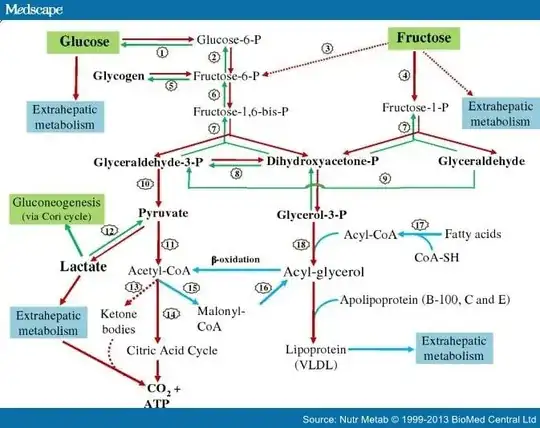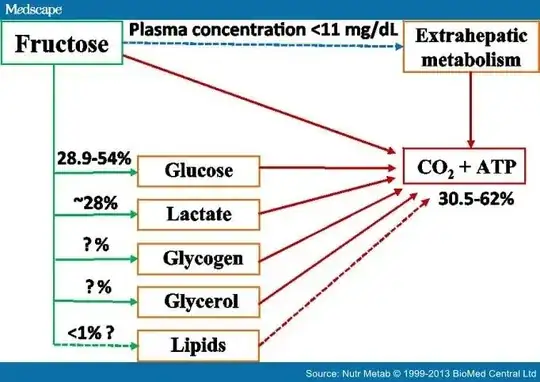At this point we don't have any studies to confirm the benefit of lemon juice with honey on reducing visceral fat. There are a couple of studies on using honey alone including this one which found improved diabetic control in rats:
Glibenclamide or metformin combined with honey also significantly
reduced the elevated levels of creatinine, bilirubin, triglycerides,
and VLDL cholesterol. These results indicate that combination of
glibenclamide or metformin with honey improves glycemic control, and
provides additional metabolic benefits, not achieved with either
glibenclamide or metformin alone. [1]
The diabetic rats lost weight, presumably due to poor diabetes control, but the drugs + honey group fared better in this respect.
A recent randomized cross-over pilot study using 20 type 1 diabetic patients was conducted in Egypt where the dietary intervention was 12-week honey consumption in a dose of 0.5 mL/kg body weight per day ( a lot more than one teaspoon ).
The intervention resulted in significant decreases in subscapular skin
fold thickness (SSFT; P=.002), fasting serum glucose (FSG; P=.001),
total cholesterol (P=.0001), serum triglycerides (TG; P=.0001), and
low-density lipoprotein (P=.0009), and significant increases in
fasting C-peptide (FCP; P=.0004) and 2-h postprandial C-peptide (PCP;
P=.002). As possible long-term effects of honey after its withdrawal,
statistically significant reductions in midarm circumference (P=.000),
triceps skin fold thickness (P=.006), SSFT (P=.003), FSG (P=.005), 2-h
postprandial serum glucose (P=.000), TG (P=.003), and HbA1C (P=.043),
and significant increases in FCP (P=.002) and PCP (P=.003) were
observed. This small clinical trial suggests that long-term
consumption of honey might have positive effects on the metabolic
derangements of type 1 DM. [2]
Though not mentioning weight per se, they did show some reduction in subcutaneous fat.
Another study, however, found no effect on BMI studying 80 obese subjects fed 40 g of honey daily over 4 weeks though it appeared to improve their lipid profiles. [6]
How honey might have favourable effects on metabolism is unclear. It is mainly comprised of two monosaccharides, glucose and fructose. Fructose has lately been implicated in the metabolic syndrome due to the addition of high fructose corn syrup as a sweetener to food. Yet, there are studies to suggest it can lower cholesterol when exchanged for carbohydrate in type 2 diabetes as concluded in this meta-analysis:
Pooled analyses demonstrated conditional triglyceride-raising and
total cholesterol-lowering effects of isocaloric fructose exchange for
carbohydrate in type 2 diabetes. Recommendations and large-scale
future trials need to address the heterogeneity in the data. [3]
Fructose has also been shown to aid weight loss in this 6 week Mexican study
Patients were randomized to receive 1500, 1800, or 2000 cal diets
according to sex, age, and height. Because natural fructose might be
differently absorbed compared with fructose from added sugars, we
randomized obese subjects to either a low-fructose diet (<20 g/d) or a
moderate-fructose diet with natural fruit supplements (50-70 g/d) and
compared the effects of both diets on the primary outcome of weight
loss in a 6-week follow-up period. [4[
when they found:
Weight loss was higher in the moderate natural fructose group (4.19 ±
0.30 kg) than the low-fructose group (2.83 ± 0.29 kg) (P = .0016).
Fructose has a different metabolic pathway from glucose

and previously was thought to be stored mainly in the liver. Isotopic metabolic studies show a different picture with only a little amount being stored as glycogen or turned into fat.

Metabolic fate of dietary fructose carbons. The data are obtained
within study periods less than or equal to 6 hours. After 50–150 gm
fructose ingestion, the peak of fructose concentration in plasma would
be between 3–11 mg/dL. The percent data above arrow lines or under box
are the estimated amounts of ingested fructose doses via the pathway,
and the question mark represents that the data remain to be further
confirmed. The dash-line represents presumably minor pathways.
Since the bulk of the fructose is converted to glucose or lactate, it is thus available directly as an energy source ( muscle can use lactate ).
Fructose in food such as honey may be quite a different beast from fructose as a food sweetener, but its role in weight loss is yet to be defined though data suggests it may be beneficial to lipid profiles, and does not in the amounts taken increase body weight.
[1] Erejuwa OO, Sulaiman SA, Wahab MS, [..], Gurtu S. Glibenclamide or metformin combined with honey improves glycemic control in streptozotocin-induced diabetic rats. Int. J. Biol. Sci. 2011 Mar 14;7(2):244-52. PubMed PMID: 21448302.
[2] Abdulrhman MM, El-Hefnawy MH, Aly RH, [..], Mohamed WS. Metabolic effects of honey in type 1 diabetes mellitus: a randomized crossover pilot study. J Med Food. 2013 Jan;16(1):66-72. doi: 10.1089/jmf.2012.0108. PubMed PMID: 23256446.
[3] Sievenpiper JL, Carleton AJ, Chatha S, [..], Jenkins DJ. Heterogeneous effects of fructose on blood lipids in individuals with type 2 diabetes: systematic review and meta-analysis of experimental trials in humans. Diabetes Care. 2009 Oct;32(10):1930-7. doi: 10.2337/dc09-0619. PubMed PMID: 19592634.
[4] Madero M, Arriaga JC, Jalal D, [..], Lozada LG. The effect of two energy-restricted diets, a low-fructose diet versus a moderate natural fructose diet, on weight loss and metabolic syndrome parameters: a randomized controlled trial. Metab. Clin. Exp. 2011 Nov;60(11):1551-9. doi: 10.1016/j.metabol.2011.04.001. PubMed PMID: 21621801.
[5] Sun SZ, Empie MW. Fructose metabolism in humans - what isotopic tracer studies tell us. Nutr Metab (Lond). 2012 Oct 2;9(1):89. doi: 10.1186/1743-7075-9-89. PubMed PMID: 23031075. Full text
[6] Mushtaq, Rehana; Mushtaq, Rubina; Khan, Zahida Tasawar Effects of Natural Honey on Lipid Profile and Body Weight in Normal Weight and Obese Adults: A Randomized Clinical Trial Pakistan Journal of Zoology;2011, Vol. 43 Issue 1, p161

